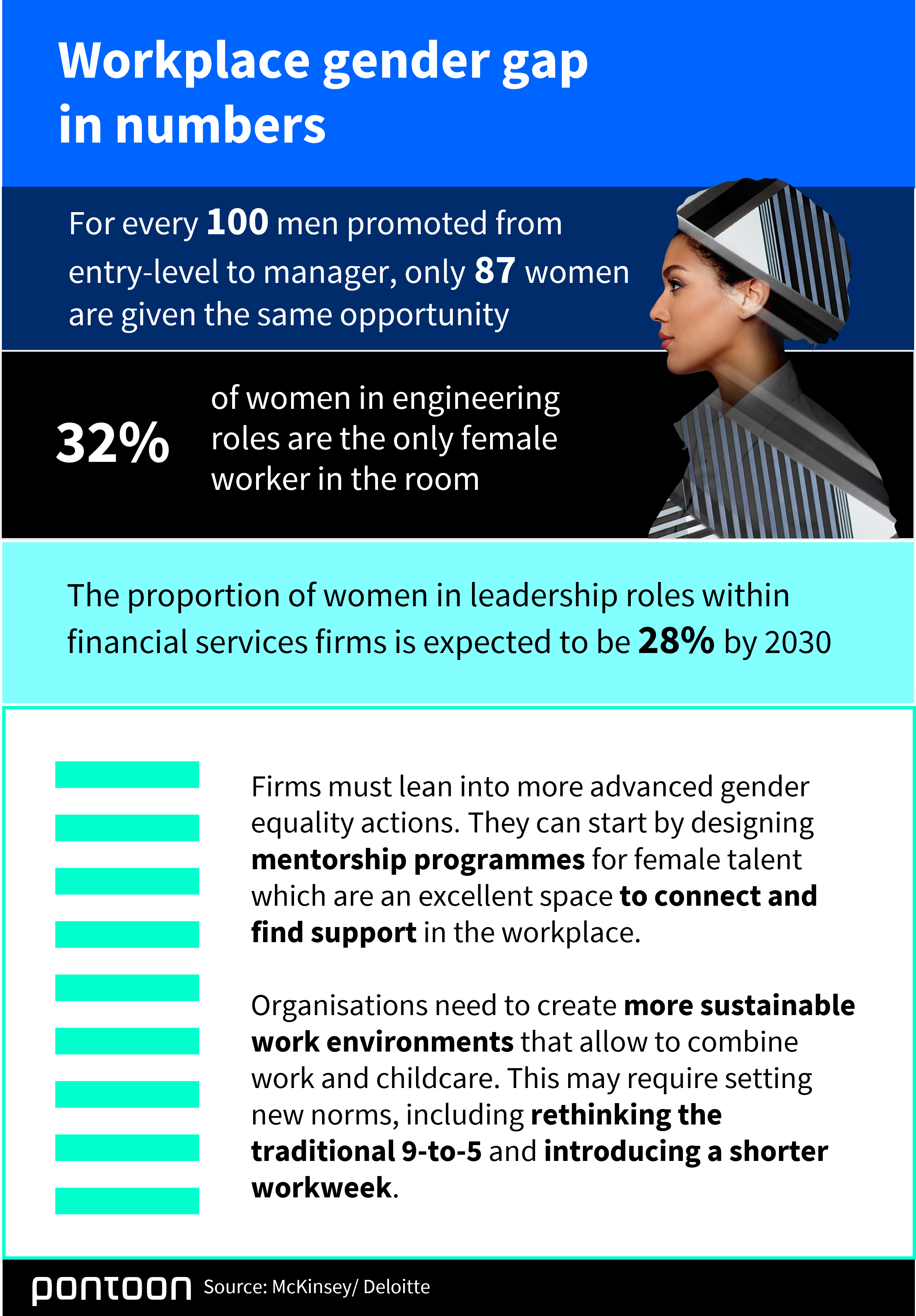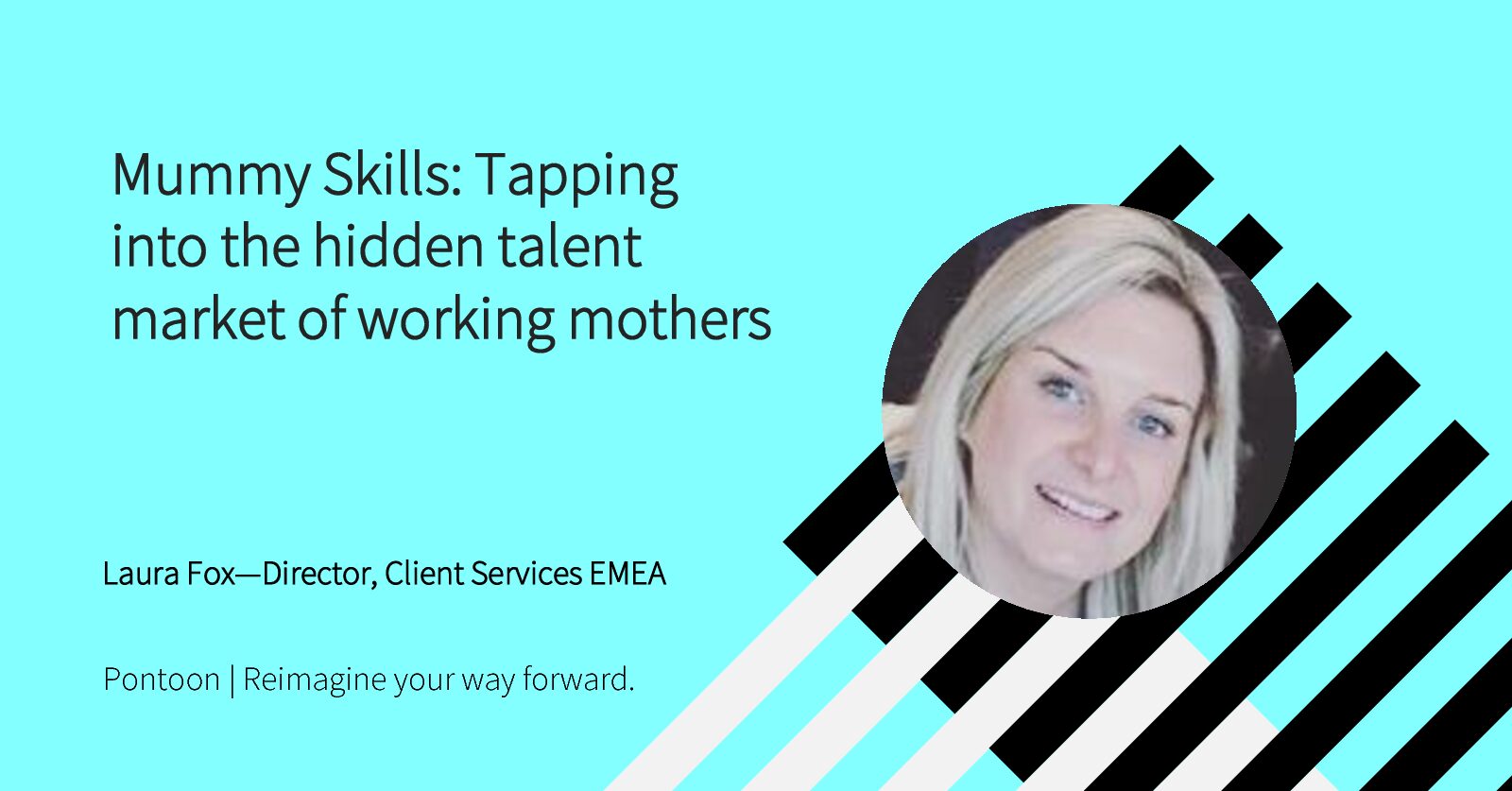Breaking the glass ceiling: Strategies for bridging the workplace gender gap
Insights
.
Workforce gender imbalance persists across industries
Despite widespread efforts across all sectors to create more gender-diverse workplaces, women remain vastly underrepresented, especially in executive roles.
Interestingly, this gap is not specific to the senior leadership level. The imbalance in the career progression of male and female workers starts much sooner and has a ripple effect on the subsequent stages of professional development. McKinsey reports that for every 100 men promoted from entry-level to manager, only 87 women are given the same opportunity. Female representation slumps dramatically at the mid-manager level, preventing women from achieving gender balance.
Challenges in the tech sector
The issue is even more evident in the tech sector, with just 52 women stepping up in their careers for every 100 men. Female specialists are far less likely to work in technical fields, and their representation is very low – 32% of women in engineering roles are often the only female worker in the room. The early data available around recent layoffs in the tech space is even more concerning. Research conducted recently by WomenTech Network shows that females constituted almost 70% of people who lost their jobs at the end of last year – a striking disproportion.
Gender representation in financial services
Although the technology sector is probably the first that comes to mind when we think about gender gap, it’s not the only one. Deloitte reported that the proportion of women in leadership roles within financial services firms is expected to be 28% by 2030. The gap between women in senior leadership roles and the C-suite of FS firms will widen to 14% in seven years.

Sources: McKinsey and Deloitte
Breaking the glass ceiling: Strategies for gender representation
Leaders must develop a systematic and strategic approach to advancing and promoting women in the workplace. According to McKinsey, almost 8 in 10 firms have already established the basics, such as tracking representation or providing unconscious bias training. However, this is still not enough. As the next step, firms must lean into more advanced gender equality actions to better position themselves as an employer of choice.
Mentorship programmes for career advancement
These practices can start with dedicated mentorship programmes for female talent. Providing women with the support of either senior colleagues or experts specialising in personal development offers many benefits. Mentors can help navigate women’s career progression and skills development, especially when there is no fellow-female teammate to foster idea sharing. Mentorship programmes are an excellent space to connect and find encouragement in the workplace. Under the wings of senior colleagues, women can also develop practical abilities to advocate for themselves, such as negotiating for a raise.
Cultivating inclusive organisational cultures
Driving long-term parity will also involve changing organisational cultural norms to have candid conversations and evaluating internal promotion tracks. Bain&Co’s research draws attention to the fact that the feeling of belonging is not universal. Female leaders and colleagues focus on behavioural enablers such as a sense of community, honest communication, and growth opportunities. They want to feel comfortable speaking up, respected by managers, and supported to advance and grow. To empower women, businesses need to also create more sustainable work environments that allow female employees to combine work and childcare. This may require setting new norms for many firms, including rethinking the traditional 9-to-5, introducing a shorter workweek, or embracing asynchronous working hours.
How Pontoon supports clients with driving gender parity
At Pontoon, we give our clients all the support they need to achieve diversity and inclusion in their MSP and RPO programmes. First, we partner to understand their strategy, check for gaps and how we can help to close them. Then, our experts suggest talent acquisition improvements tailored to our customers’ specific needs.
Leveraging technology for inclusive recruitment
Our experts use technology to source and attract diverse talent – for example, tools that help write unbiased job descriptions. We deploy analytics for job profiling and market mapping to showcase pockets of female talent available in specific locations. Our teams develop outreach campaigns that include social media, grassroots efforts and partnerships with universities and diverse organisations. On the contingent labour side, we additionally cooperate with suppliers who understand the importance our clients place on creating a balanced workforce.
Contact us to find out more.
Related Post
A mother's work is never done
A mother's work is never done; it's a full-time job. In my case, with two young boys, the house is run like a military operation, ...




